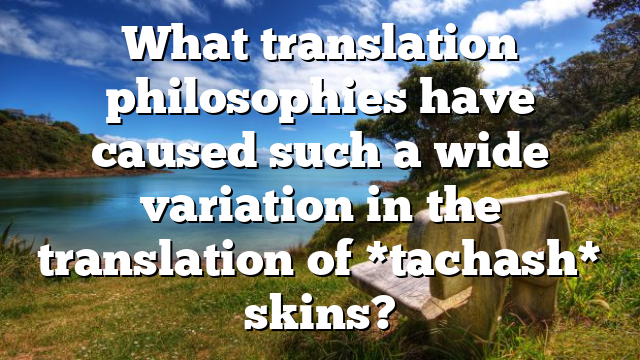Click to join the conversation with over 500,000 Pentecostal believers and scholars
Click to get our FREE MOBILE APP and stay connected
| PentecostalTheology.com



In Exodus (e.g. 26:14), we learn one of the coverings for the tabernacle is to be made of “תחש” (tachash) skins. The translation of this term appears to be especially difficult or contentious as there is little consensus between translations as to how to translate this word.
E.g., some various translation of this covering:
- “a covering of porpoise skins” (NASB)
- “a covering of hides of sea cows” (NIV 1984)
- “a covering of badger skins” (NKJV)
- “a covering of sealskins” (ASV)
- “a covering of goatskins” (ESV)
- “the other of fine leather” (GNT)
- “blue skins as coverings” (Brenton)
Why, in this case, bother trying to translate the uncertain word at all? I have seen other cases in the Bible where uncertain words were left as a transliteration of the Hebrew. But here, translators seem to have enough clues (presumably from the word roots?) to make conjectures that are completely dissimilar—what translation philosophies would cause them to come to such different conclusions as to what tachash might be?




Most Talked About Today